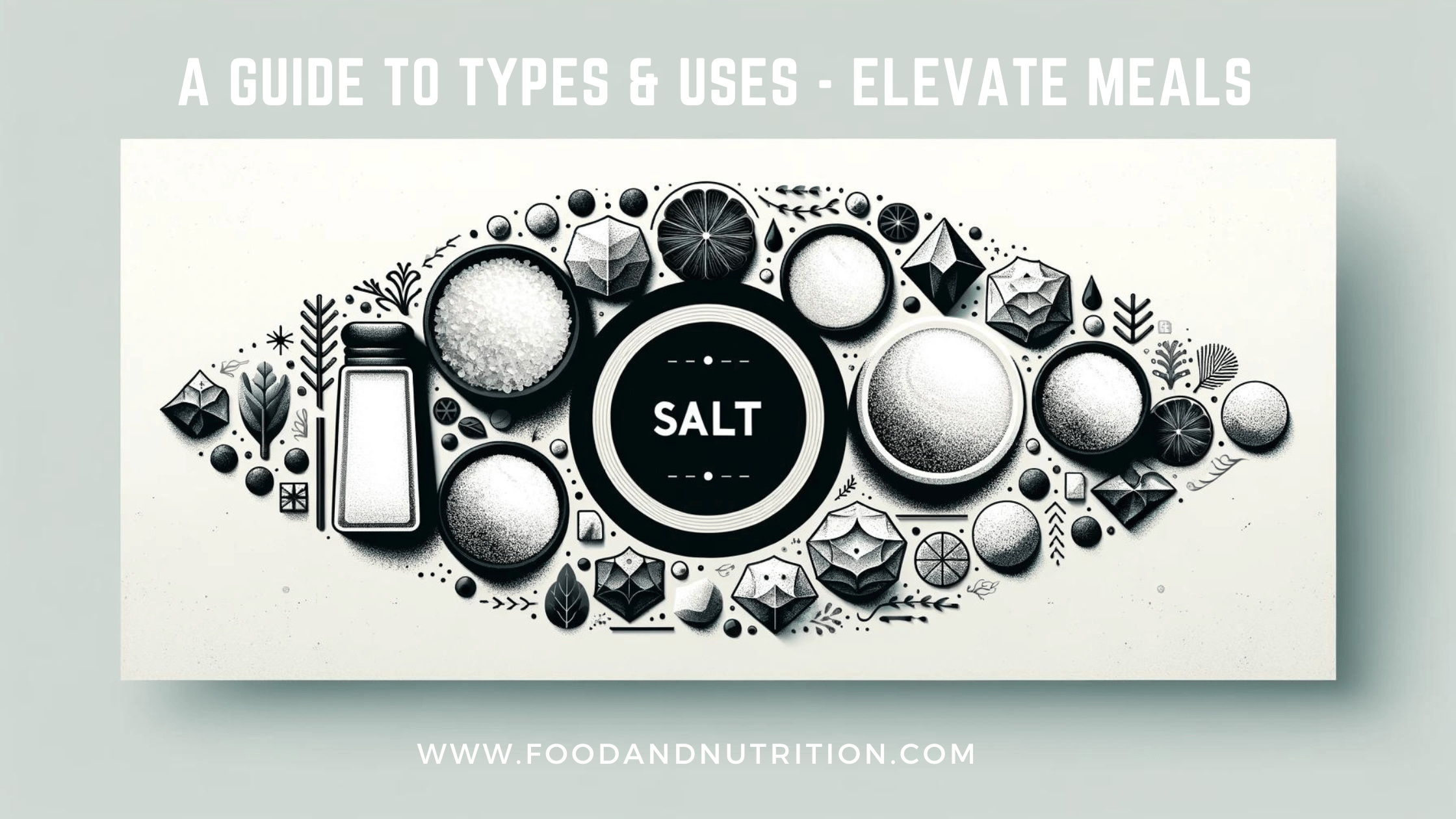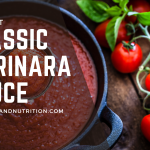Master Cooking with Salt: A Guide to Types & Uses – Elevate Meals

When incorporating the diverse world of salts into everyday cooking, understanding the unique characteristics, health benefits, and culinary applications of each type can transform your meals from good to gourmet. This table, curated in collaboration with a registered dietitian, serves as a comprehensive guide to choosing the right salt for your cooking needs, ensuring both flavor enhancement and nutritional mindfulness.
How to Use the Table in Everyday Cooking
- Identify Your Cooking Needs: Whether you’re seasoning, finishing, or preserving food, the table categorizes salts by type and use. For everyday cooking, look for salts under the “Type” column that match your culinary task. For example, table salt is ideal for general cooking, while Fleur de Sel is perfect for finishing dishes with a touch of elegance.
- Consider Health Benefits: If you’re mindful of dietary needs, focus on the “Potential Health Benefits” column. Low sodium salt alternatives are great for those monitoring their blood pressure, while salts like Himalayan Pink Salt offer trace minerals that can complement a balanced diet.
- Explore Culinary Applications: The “Example of Use” column provides inspiration for how to incorporate these salts into your meals. Use this as a guide to experiment with different salts in your recipes, whether sprinkling Maldon Salt on roasted vegetables or enhancing a vegan dish with Himalayan Black Salt for an egg-like flavor.
- Experiment with Flavors and Textures: Don’t be afraid to experiment. The unique characteristics of each salt, such as the smoky flavor of Smoked Salt or the delicate crunch of Fleur de Sel, can add depth and complexity to your dishes. Use this table as a starting point to explore how different salts can elevate your cooking.
- Balance and Moderation: While exploring the world of salts, remember the importance of moderation. Even as we delve into salts that offer health benefits, it’s essential to use them as part of a balanced diet, considering overall sodium intake.
Practical Tips
- Start with Small Amounts: Especially when trying a new salt, begin with a smaller quantity than you might with regular table salt. Their unique flavors and textures can be more potent.
- Keep a Variety on Hand: Stock your pantry with a few different types of salt. Having a variety allows you to choose the best one for each dish, whether you’re baking, cooking, or finishing.
- Taste as You Go: When experimenting with new salts, taste your food as you season it. This practice helps you understand the impact of each salt on your dish, allowing you to adjust as necessary.
By leveraging the insights from this table, you can enhance the flavor, healthfulness, and presentation of your meals. Remember, the key to using salt effectively lies in understanding its properties and how it complements the ingredients you’re working with. Happy cooking!
Salt Use Chart
| Name | Type | Characteristics | Potential Health Benefits | Example of Use |
|---|---|---|---|---|
| Black Hawaiian Sea Salt | Sea Salt | Black from activated charcoal, detoxifying | Activated charcoal may aid digestion | Garnishing, enhancing the visual appeal of dishes |
| Black Salt (Kala Namak) | Rock Salt | Pinkish-grey, strong sulfurous flavor | Used in Ayurveda for its digestive properties | Indian cuisine, chaats, raitas |
| Celery Salt | Flavored Salt | Ground celery seeds mixed with salt | Celery seeds may help lower blood pressure | Cocktails (e.g., Bloody Mary), salads, and soups |
| Celtic Salt | Sea Salt | Moist, grey, mineral-rich, smaller crystals than Sel Gris | High mineral content, especially magnesium | Finishing, cooking, especially good with fish |
| Fleur de Sel | Sea Salt | Light, flaky, premium quality | Contains trace minerals | Sprinkling on top of chocolates and caramels |
| Garlic Salt | Flavored Salt | Blend with garlic powder | Garlic for added health benefits, like improved heart health | Seasoning for meats, vegetables, and sauces |
| Himalayan Black Salt | Rock Salt | Black, sulfurous flavor | May aid digestion, vegan cooking to mimic egg flavor | Indian cuisine, vegan dishes to add egg-like flavor |
| Himalayan Pink Salt | Rock Salt | Pink from mineral impurities, mined | Trace minerals, including potassium, magnesium, and calcium | Cooking, finishing, decorative salt blocks |
| Himalayan Pink Salt (Fine) | Rock Salt | Fine grain, suitable for table use, pink from mineral impurities | Trace minerals, supports electrolyte balance | Everyday seasoning, alternative to table salt |
| Kosher Salt | Coarse Salt | Flakey, no iodine, dissolves easily | No added iodine or anti-caking agents | Brining, seasoning, koshering meat |
| Low Sodium Salt | Modified Salt | Blend with potassium chloride | Reduces sodium intake, beneficial for blood pressure management | Everyday cooking for those monitoring sodium intake |
| Maldon Salt | Sea Salt | Pyramid-shaped flakes from England, light taste | Contains natural minerals | Finishing salt for meats, vegetables |
| Red Alae Hawaiian Sea Salt | Sea Salt | Unrefined, red from volcanic clay, traditional | Trace minerals, especially iron | Traditional Hawaiian dishes, poke |
| Rock Salt | Unrefined Salt | Large, chunky crystals | Not typically consumed directly, no specific health benefits noted | Ice cream making, de-icing |
| Sea Salt | Sea Salt | Harvested from evaporated seawater, varies by source | Trace minerals depending on the source | General cooking, finishing |
| Sel Gris | Sea Salt | Coarse, moist, mineral-rich | Higher mineral content compared to table salt | Finishing salt for meats and vegetables |
| Smoked Salt | Flavored Salt | Infused with smoke, distinct smoky flavor | No specific health benefits, adds smoky flavor without grilling | Finishing salt for meats, vegetables, and cocktails |
| Table Salt | Refined Salt | Fine, iodized, anti-caking agents | Iodine addition helps prevent iodine deficiency | General cooking, baking |
| Truffle Salt | Flavored Salt | Infused with black or white truffles, luxurious aroma and flavor | No specific health benefits, luxury flavor enhancement | Enhancing eggs, pasta, popcorn |
foodandnutrition.com
- Unlock Classic Marinara Sauce: A Flavorful & Nutritious Guide

- Embracing Summer: The Ultimate Watermelon Feta Salad with Tomatoes & Olives

- Rediscovering Lebanese Salad: A Refreshing Delight with a Rich Heritage

- Eating Your Way to Healthy Blood Pressure: A Guide to Lowering Hypertension

- Perfect Roasted Leg of Lamb: A Timeless Delight for Your Table

- Romesco Sauce: A Flavorful Spanish Delight That Elevates Every Dish
